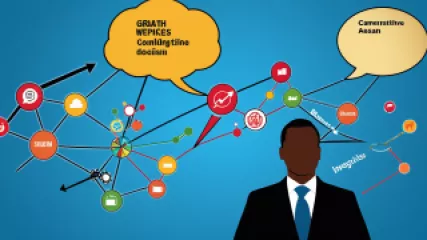Overcoming Anchoring Bias: A Step-by-Step Guide
Overcoming Anchoring Bias: A Step-by-Step Guide
In the ever-evolving landscape of decision-making, one of the most pervasive cognitive biases we face is the anchoring bias. This bias occurs when we rely too heavily on the first piece of information we receive, known as the "anchor," when making decisions or judgments. Anchoring can have a profound impact on our ability to think objectively and make well-informed choices, leading us down a path of suboptimal outcomes. However, with a deeper understanding of this bias and a strategic approach to mitigating its effects, we can learn to overcome anchoring and make more rational, informed decisions.
Understanding Anchoring Bias
Anchoring bias is a cognitive heuristic, or mental shortcut, that causes us to rely too heavily on the first piece of information we encounter when making decisions or judgments. This initial piece of information, the anchor, serves as a reference point that heavily influences our subsequent assessments and choices, even if the anchor is completely irrelevant or arbitrary.
The anchoring effect was first described by psychologists Amos Tversky and Daniel Kahneman in the 1970s. Through various experiments, they demonstrated how the presence of an anchor, even when it is clearly unrelated to the decision at hand, can significantly skew our perceptions and judgments.
For example, in one study, participants were asked to estimate the percentage of African countries in the United Nations. Before making their estimate, they were first asked to spin a "wheel of fortune" that randomly displayed a number between 0 and 100. The participants were then asked whether the percentage of African countries in the UN was higher or lower than the number displayed on the wheel. Unsurprisingly, the participants' final estimates were heavily influenced by the arbitrary number they had just seen, with those who saw a higher number on the wheel providing significantly higher estimates than those who saw a lower number.
This anchoring effect has been observed in a wide range of decision-making scenarios, from negotiating prices to evaluating the likelihood of future events. It highlights how our cognitive biases can lead us astray, causing us to make suboptimal choices that are heavily influenced by irrelevant information.
The Dangers of Anchoring Bias
Anchoring bias can have far-reaching consequences in our personal and professional lives. By relying too heavily on the initial information we receive, we may fail to consider alternative perspectives, critical evidence, or important factors that could significantly impact the outcome of our decisions.
In the realm of personal finance, anchoring bias can lead us to make poor investment decisions. For instance, if we hear that a particular stock is trading at a certain price, we may become anchored to that price point, even if subsequent news or analysis suggests the stock is overvalued or undervalued. This can result in us buying or selling at suboptimal times, ultimately affecting our long-term financial well-being.
In the business world, anchoring bias can have even more substantial implications. When negotiating contracts or setting pricing, companies may become anchored to an initial offer or proposal, leading them to make concessions that are not in their best interest. Similarly, during the hiring process, interviewers may be heavily influenced by the first impression of a candidate, overlooking critical skills or qualifications that could be more relevant to the role.
Furthermore, anchoring bias can have significant consequences in the realm of healthcare and medical decision-making. Doctors, for example, may become anchored to an initial diagnosis or treatment plan, even in the face of new evidence or the emergence of alternative options that may be more effective. This can lead to suboptimal patient outcomes and increased healthcare costs.
Recognizing the potential dangers of anchoring bias is the first step towards overcoming its influence and making more informed, rational decisions. By developing a heightened awareness of this cognitive bias and implementing strategies to mitigate its effects, we can unlock our full decision-making potential and achieve more successful outcomes in various aspects of our lives.
Strategies for Overcoming Anchoring Bias
Overcoming anchoring bias requires a multifaceted approach, involving both cognitive strategies and practical techniques. By adopting these strategies, you can train your mind to be more open-minded, flexible, and less susceptible to the anchoring effect.
1. Actively Seek Diverse Perspectives
One of the most effective ways to combat anchoring bias is to actively seek out diverse perspectives and alternative viewpoints. When faced with a decision, make a conscious effort to gather information from multiple sources, including experts, industry peers, and individuals with different backgrounds and experiences. By exposing yourself to a wider range of opinions and data, you can broaden your understanding of the issue at hand and avoid becoming overly reliant on the initial anchor.
2. Challenge Your Assumptions
Anchoring bias often arises from our tendency to accept the first piece of information we encounter as the truth. To overcome this, it's essential to challenge your own assumptions and question the validity of the anchor. Actively investigate the source of the anchor, its relevance to the decision at hand, and whether there are any potential biases or errors in the information. By critically examining the anchor, you can better assess its true value and reduce the likelihood of it unduly influencing your judgment.
3. Employ Debiasing Techniques
Researchers have developed various debiasing techniques to help individuals overcome anchoring bias. One effective strategy is the "consider-the-opposite" approach, where you actively consider alternative explanations or scenarios that contradict the initial anchor. This helps to counteract the anchoring effect and encourages a more balanced, objective evaluation of the decision.
Another debiasing technique is to encourage "pre-mortems," where you imagine a scenario in which your decision has failed and then work backward to identify potential pitfalls or overlooked factors. This exercise can help you break free from the anchor and consider a wider range of possibilities and outcomes.
4. Delay Decision-Making
Anchoring bias is often more pronounced when we are under time pressure or forced to make quick decisions. By deliberately slowing down the decision-making process and allowing for more time to gather information and deliberate, you can reduce the influence of the anchor and make more thoughtful, well-informed choices.
This may involve setting aside dedicated time for research, analysis, and reflection before committing to a final decision. By creating space for a more thorough decision-making process, you can mitigate the effects of anchoring bias and arrive at more optimal outcomes.
5. Acknowledge Your Cognitive Biases
Recognizing and openly acknowledging the presence of cognitive biases, such as anchoring bias, is a crucial step in overcoming their influence. By being aware of your own cognitive tendencies and limitations, you can develop a more mindful and introspective approach to decision-making.
This self-awareness can empower you to actively monitor your thought processes, identify when anchoring bias may be at play, and consciously apply debiasing strategies to mitigate its effects. Embracing your cognitive biases, rather than ignoring or denying them, can lead to more robust and resilient decision-making skills.
Overcoming Anchoring Bias in Practice
To illustrate the practical application of these strategies, let's consider a scenario where anchoring bias might come into play: negotiating the price of a new car.
Imagine you've been researching various makes and models of cars, and you've settled on a specific vehicle that fits your needs and budget. As you begin the negotiation process with the car dealer, the initial offer they provide becomes the anchor. This anchor price may be significantly higher than what you've determined to be the fair market value for the car based on your research.
To overcome the anchoring bias in this situation, you could apply the following strategies:
1. Actively Seek Diverse Perspectives
Instead of relying solely on the dealer's initial offer, you could reach out to other car dealers, automotive experts, or even friends and family members who have recently purchased a similar vehicle. This would provide you with a broader range of price points and perspectives to consider, helping you to better evaluate the fairness of the anchor price.
2. Challenge Your Assumptions
Carefully examine the dealer's justification for the anchor price. Are there any underlying factors or assumptions that may be influencing their offer? Are there any potential biases or errors in the information they're providing? By critically analyzing the anchor, you can better assess its validity and relevance to your decision-making process.
3. Employ Debiasing Techniques
Consider the "consider-the-opposite" approach by imagining a scenario where the dealer's offer is significantly lower than the fair market value. What factors might be driving such a low price? This exercise can help you break free from the anchoring effect and explore a wider range of possibilities.
You could also conduct a "pre-mortem" by envisioning a scenario where you accept the dealer's anchor price, only to later discover that you've paid significantly more than the car's true value. This can help you identify potential pitfalls and guide you towards a more informed negotiation strategy.
4. Delay Decision-Making
Instead of feeling pressured to make a decision on the spot, take the time to carefully consider all the information you've gathered. Politely request a day or two to review the offer and conduct further research before committing to a final decision. This will help you avoid the temptation to succumb to the anchoring bias and make a more informed choice.
5. Acknowledge Your Cognitive Biases
Throughout the negotiation process, be mindful of your own cognitive biases and how they might be influencing your decision-making. Acknowledge the presence of anchoring bias and consciously apply the strategies you've learned to overcome its effects. This self-awareness will empower you to make a more rational, well-informed decision that aligns with your best interests.
Conclusion: Embrace a Bias-Aware Mindset
Overcoming anchoring bias is a crucial step in becoming a more effective and rational decision-maker. By understanding the nature of this cognitive bias, recognizing its dangers, and implementing proven strategies to mitigate its influence, you can unlock your full potential and make choices that lead to more successful outcomes.
Embracing a bias-aware mindset is not just about conquering anchoring bias; it's about developing a deeper understanding of the various cognitive biases that can shape our perceptions and decision-making. By cultivating this self-awareness, you can extend these strategies to overcome other biases, such as the optimism bias or the confirmation bias, ultimately leading to more informed, objective, and well-rounded decisions.
Remember, the journey to overcoming cognitive biases is an ongoing process, and it requires a combination of diligence, self-reflection, and a willingness to challenge your own assumptions. By persistently applying the strategies outlined in this guide, you can gradually train your mind to be more flexible, open-minded, and resistant to the anchoring effect, empowering you to make better choices that align with your true goals and priorities.
Embrace the challenge of overcoming anchoring bias, and embark on a path of enlightened decision-making. The rewards of this journey will be manifold, as you unlock new opportunities, strengthen your critical thinking skills, and ultimately, become a more effective and adaptable problem-solver in both your personal and professional life.






